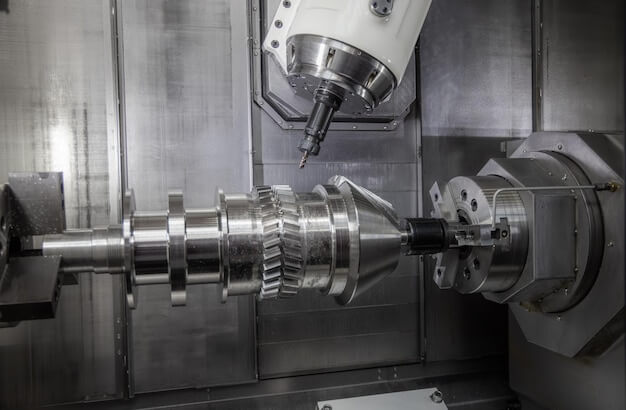Introduction to Micro Injection Molding
Micro injection molding is an advanced manufacturing technique that miniaturizes traditional injection molding processes. The principle of micro injection molding revolves around producing tiny, intricate components with extreme precision, using polymers or other thermoplastic materials. It enables complex shapes and configurations in the micron range which are widely used for small products like medical equipment parts, electronics, automotive elements, and various industries requiring meticulous details. Its benefits include high yields, cost-effectiveness, resource efficiency, rapid product development time, and the capacity to create items on a microscopic scale. Henceforth, the integral role it plays in accelerating industrial innovation.
Understanding the Principle of Micro Injection Molding
Micro injection molding is a specialized process designed to manufacture small, high-precision components with intricate details. This process is fundamentally similar to conventional injection molding but operates on a much smaller scale. The principle revolves around injecting a molten thermoplastic material into a micro-sized mold cavity, where it cools and solidifies into the desired shape.
The key to successful micro injection molding lies in the precision of the mold design and the injection process. For this reason, services like Precision Machining Service are crucial. They ensure that the molds are manufactured with the utmost accuracy, allowing for the production of components with tight tolerances and complex geometries.
Step-by-Step Description of the Micro Injection Molding Process
- Mold Design: Utilizing precision machining techniques to create molds that meet the specific requirements of micro-sized components.
- Material Selection: Choosing the appropriate thermoplastic material that suits the functionality and specifications of the component.
- Injection: Precisely injecting the molten material into the micro mold cavity under controlled conditions.
- Cooling and Solidification: Allowing the injected material to cool and solidify within the mold, forming the final component.
- Ejection: Carefully ejecting the solidified component from the mold, ensuring that its intricate details and precision are maintained.
This meticulous process requires not only advanced machinery and materials but also a deep understanding of the principles of micro injection molding. By leveraging precision machining services to create highly accurate molds, manufacturers can achieve the level of detail and precision required for micro components, making micro injection molding an indispensable technique in the production of small, complex parts.
Benefits of Micro Injection Molding
Micro injection molding offers numerous cost and efficiency advantages. This technology is inherently cost-effective as it utilizes minimal material in the production process, resulting in waste reduction. While traditional forms of plastic manufacturing are less precise and can create a substantial amount of waste slick, the high precision and accuracy offered by micro injection molding vastly reduce imperfections, leading to fewer wasteful errors. Furthermore, with moldings often smaller than one millimeter, highly complex and detailed designs can be accurately replicated at a minuscule scale without sacrificing product quality or function. The short cycle times in production make this technology ideal for mass-producing tiny components within strict deadlines. The swiftness associated with these fast-paced cycles does not compromise on the quality of intricate components produced which allows manufacturers to maintain an optimum balance between speed and precision.
Real-World Applications of Micro Injection Molding
In the field of medical devices manufacturing, micro injection molding plays a crucial role in creating small, intricate parts with high precision, such as surgical instruments and implantable devices. The electronic industry also significantly relies on this technology for creating diverse components like connectors, circuits, and sensor elements due to its capacity for achieving precise dimensions and complex geometries. Furthermore, the automotive sector utilizes micro injection molding in crafting tiny yet critical elements including gears, braking systems, and other performance-enhancing automotive parts. Consequently, micro injection molding shines as an invaluable tool across many industries requiring superior precision and consistency in their miniature component production.
Understanding the Technical Complexities of Micro Injection Molding
Micro injection molding, while complex at a glance, is easily simplified when broken down into its primary elements. Essentially, this manufacturing process involves injecting minute amounts of molten material into a mold to produce extremely small precision parts. Various materials such as thermoplastics, elastomers, and metals can be utilized based on specific requirements. The critical components in this process include the feed system that carries the material, the heating system which melts it, and the pressure system which injects the material into the mold. Each component plays an integral role in ensuring high precision and accuracy during the production process.
Principles of Micro Injection Molding
The technical principles behind micro injection molding focus on the process’s ability to produce extremely small, high-precision parts at a rapid pace. The central principle involves injecting molten materials into a molded cavity at high pressure using an injection molding machine. This is followed by cooling and solidifying these materials within the cavity. Once they are solidified, ejector pins remove the formed part from the mold. Accuracy plays a vital role in this process, as the dimension, weight, and shape of each piece must be precisely controlled to maintain quality. Additionally, the mold’s durability is also important; it should resist wear and tear since thousands of injections occur before replacing the mold. Consequently, the use of micro injection molding spans numerous sectors for constructing detailed components such as miniature gears or medical devices, displaying its versatility and precision.
Other Articles You Might Enjoy
- Micro Injection Molding: Principle, Benefits, and Applications
Introduction to Micro Injection Molding Micro injection molding is a high-precision manufacturing process used in producing miniature and intricate plastic parts. This procedure, employing specialised machines with high-pressure moulding capabilities…
- Micro Injection Molding: Principle, Benefits, and Applications
Introduction to Micro Injection Molding Micro injection molding is a specialized form of manufacturing that enables the production of small and intricate plastic parts with precision. The process involves injecting…
- Precision Micro Injection Molding: Essential Advantages and Versatile Applications
Micro injection molding is a specialized form of manufacturing that enables the production of small and intricate plastic parts with high precision. It stands as an essential technique in various…









